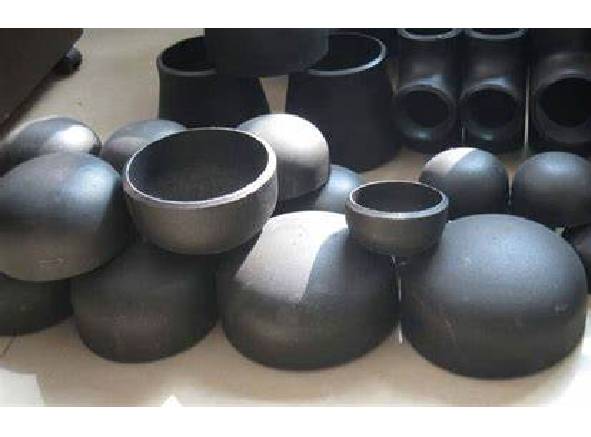-
Cangzhou Yulong Steel Co., Ltd.
-
Phone:
+86 13303177267 -
Email:
admin@ylsteelfittings.com
- English
- Arabic
- Italian
- Spanish
- Portuguese
- German
- kazakh
- Persian
- Greek
- French
- Russian
- Polish
- Thai
- Indonesian
- Vietnamese
- Zulu
- Korean
- Uzbek
- Hindi
- Serbian
- Malay
- Ukrainian
- Gujarati
- Haitian Creole
- hausa
- hawaiian
- Hebrew
- Miao
- Hungarian
- Icelandic
- igbo
- irish
- Japanese
- Javanese
- Kannada
- Khmer
- Rwandese
- Afrikaans
- Albanian
- Amharic
- Armenian
- Azerbaijani
- Basque
- Belarusian
- Bengali
- Bosnian
- Bulgarian
- Catalan
- Cebuano
- China
- China (Taiwan)
- Corsican
- Croatian
- Czech
- Danish
- Esperanto
- Estonian
- Finnish
- Frisian
- Galician
- Georgian
- Kurdish
- Kyrgyz
- Lao
- Latin
- Latvian
- Lithuanian
- Luxembourgish
- Macedonian
- Malgashi
- Malayalam
- Maltese
- Maori
- Marathi
- Mongolian
- Myanmar
- Nepali
- Norwegian
- Norwegian
- Occitan
- Pashto
- Dutch
- Punjabi
- Romanian
- Samoan
- Scottish Gaelic
- Sesotho
- Shona
- Sindhi
- Sinhala
- Slovak
- Slovenian
- Somali
- Sundanese
- Swahili
- Swedish
- Tagalog
- Tajik
- Tamil
- Tatar
- Telugu
- Turkish
- Turkmen
- Urdu
- Uighur
- Welsh
- Bantu
- Yiddish
- Yoruba

Sep . 14, 2024 19:58 Back to list
api 5l psl2
Understanding API 5L PSL2 A Comprehensive Guide
The API 5L standard is crucial for the oil and gas industry, primarily governing the specifications for line pipes used in the transportation of oil, gas, and water. Among its various specifications, PSL1 and PSL2 are two critical categories that define the requirements for these pipes, with PSL2, in particular, encompassing more stringent standards. This article aims to delve into the specifics of API 5L PSL2, emphasizing its significance, requirements, and applications.
What is API 5L?
API 5L is a specification developed by the American Petroleum Institute (API). It outlines the requirements for the manufacture of pipes used in pipeline systems that transport oil and natural gas. The specification covers several grades, each designated with a specific designation such as X42, X52, X60, etc., depending on their yield strength.
Understanding PSL Levels
PSL, or Product Specification Level, is a classification that indicates the technical requirements of the line pipe. API 5L provides two levels of specifications PSL1 and PSL2. The PSL1 category represents the base level of requirements, while PSL2 includes additional testing and quality standards, making it suitable for more demanding conditions.
Significance of PSL2
PSL2 standards are vital for projects requiring enhanced mechanical properties and stricter testing criteria. This level is designed for applications encountering higher temperatures, pressures, and more corrosive environments. As a result, PSL2 pipes are ideal for critical pipelines where reliability and safety are paramount.
Key Requirements of PSL2
api 5l psl2

1. Chemical Composition PSL2 pipes must meet stricter chemical composition limits to ensure enhanced performance. The specifications require careful control of elements like carbon, manganese, phosphorus, and sulfur, which affect the pipe's strength and resistance to degradation.
2. Mechanical Properties PSL2 pipes exhibit improved mechanical properties, including yield strength, tensile strength, and elongation. These enhanced properties are crucial for the integrity of pipelines under various operational stresses.
3. Non-destructive Testing (NDT) Another significant aspect of PSL2 is the requirement for non-destructive testing methods such as ultrasonic testing (UT) and magnetic particle testing (MPT). These tests help identify any flaws or defects in the pipe material that could compromise safety and functionality.
4. Impact Testing For certain grades, impact testing at low temperatures is required to ensure the pipe's performance in colder climates. This is especially important for pipelines designed to operate in regions with extreme weather conditions.
Applications of PSL2 Line Pipes
API 5L PSL2 pipes find extensive use in onshore and offshore oil and gas operations. Their robust construction makes them suitable for high-pressure gas transmission lines, water pipelines, and other applications where safety and durability are critical. Industries relying on these pipes include petrochemical, power generation, and construction, emphasizing the versatility and importance of API 5L PSL2 specifications.
Conclusion
In summary, API 5L PSL2 specifications play a vital role in ensuring the safe and efficient transportation of oil and gas. The stringent requirements for chemical composition, mechanical properties, and rigorous testing standards make PSL2 pipes the preferred choice for critical applications. As the energy sector continues to evolve, adherence to these specifications will remain essential for the integrity and reliability of pipeline infrastructure worldwide. Understanding API 5L PSL2 is imperative for industry professionals committed to excellence and safety in pipeline engineering.
Latest news
-
ANSI 150P SS304 SO FLANGE
NewsFeb.14,2025
-
ASTM A333GR6 STEEL PIPE
NewsJan.20,2025
-
ANSI B16.5 WELDING NECK FLANGE
NewsJan.15,2026
-
ANSI B16.5 SLIP-ON FLANGE
NewsApr.19,2024
-
SABS 1123 FLANGE
NewsJan.15,2025
-
DIN86044 PLATE FLANGE
NewsApr.19,2024
-
DIN2527 BLIND FLANGE
NewsApr.12,2024
-
JIS B2311 Butt-Welding Fittings LR/SR 45°/90° /180°Seamless/Weld
NewsApr.23,2024











